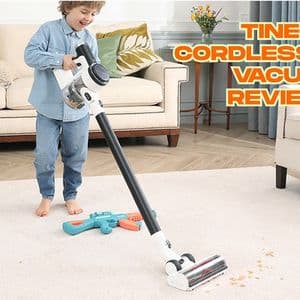How Vacuum Cleaners Work
So, how do these devices actually operate?
At the heart of every vacuum cleaner is a motor that powers a fan. When the fan spins, it reduces the air pressure inside the machine, creating suction. As outside air rushes in to fill the low-pressure zone, it carries along dust and dirt particles through the nozzle and into a filter or collection bin.
Here's where things get interesting:
The efficiency of a vacuum depends on airflow, suction power, and how well it separates particles from air. Some advanced models even use cyclonic separation or water filtration to boost performance.
Key Components of a Vacuum Cleaner
Before diving into vacuum types, it's helpful to know the essential parts that most units share:
Motor
This is the engine behind the suction. Larger motors tend to be more powerful but may consume more energy.
Suction Head/Nozzle
The attachment that contacts surfaces. It may be motorized or passive, depending on the design.
Filters
HEPA (High-Efficiency Particulate Air) filters are common in newer models and help trap allergens.
Dust Collection System
This can be a disposable bag or a reusable dustbin. The design affects how easy the unit is to clean and maintain.
Wheels and Handle
Though basic, these features impact maneuverability—especially in larger models.
Types of Vacuum Cleaners
Vacuum cleaners come in various forms to suit different environments and cleaning preferences.
Upright Vacuums
Tall and powerful, these are ideal for carpet-heavy homes. They typically offer strong suction and wide cleaning paths.
Canister Vacuums
Separated into a main unit and a wand, canister vacuums provide flexibility and are better for stairs, upholstery, and under furniture.
Stick Vacuums
Lightweight and compact, stick models are great for quick cleanups and small spaces. They're usually battery-operated.
Handheld Vacuums
Perfect for spot cleaning, car interiors, and furniture. These compact units are easy to store but limited in power.
Robot Vacuums
Designed for convenience, these autonomous devices map rooms and clean without human intervention. Their performance can vary based on floor types and obstacles.
Corded vs. Cordless Models
Choosing between corded and cordless depends on usage habits and home layout.
Corded Vacuums
-
Consistent power supply
-
Typically more powerful
-
No runtime limitations
-
Less maneuverable due to cables
Cordless Vacuums
-
More portable and convenient
-
Limited by battery life
-
Easier to use in tight spaces
-
Ideal for quick cleanups
One example of a cordless model that stands out in many vacuum dyson review discussions is the use of lightweight materials combined with high-performance batteries, though many brands have also entered the cordless market competitively.
Specialized Vacuums for Specific Needs
Not all vacuum cleaners are created equal. Some models are built with specific use cases in mind:
Pet Hair Removal
These vacuums come with special brushes and high-powered suction to collect fur from carpets and furniture.
Hardwood Floor Care
Soft roller heads and adjustable suction make certain vacuums ideal for delicate floors.
Allergy Reduction
Units equipped with HEPA filters can trap fine allergens like pollen and dust mites, improving indoor air quality.
Wet and Dry Vacuums
These versatile machines handle both liquid spills and dry debris, commonly used in workshops and garages.
Choosing the Right Vacuum for Your Space
Before investing in a vacuum, consider these questions:
-
What type of flooring dominates your space? Carpeted areas may require more suction, while hardwood floors benefit from soft roller heads.
-
Do you have pets? Pet hair can clog standard vacuums quickly.
-
How large is your home? Larger homes may benefit from powerful corded models or high-capacity bins.
-
Are you dealing with allergies? HEPA filters can be crucial.
-
How often do you clean? Daily users might prefer lighter cordless models for ease of use.
When evaluating cordless units, options like the bissel cordless vacuum often come up in consumer comparisons for their user-friendly design and adaptability in small living spaces.
Innovations in Modern Vacuum Technology
The vacuum cleaner industry continues to evolve, embracing smart technology and user convenience.
Smart Mapping and AI
Robotic vacuums now use LIDAR, infrared, and camera sensors to create real-time maps and avoid obstacles intelligently.
App Integration
Many models allow users to schedule cleanings, check battery levels, or track maintenance through smartphone apps.
Self-Emptying Bins
High-end robotic models can now dock themselves and empty their contents automatically, reducing the need for hands-on management.
Multi-Surface Sensors
Some vacuums automatically adjust suction based on surface type, making transitions from carpet to tile seamless.
These innovations aren’t just flashy extras—they reflect the growing demand for efficient, automated home cleaning solutions.
Read more: What is The Best Home Vacuum Cleaner
Conclusion
Understanding what is vacuum cleaner helps you make more informed choices, especially in a market filled with diverse models and features. From traditional upright designs to intelligent robotic systems, vacuum cleaners have come a long way in supporting our daily routines.
Whether you need a lightweight stick vacuum for apartment living or a heavy-duty machine for a large home, recognizing the key features and matching them to your needs is crucial. While product options may vary, the foundational technology remains rooted in suction and efficiency—proving just how essential these machines have become in modern life.










